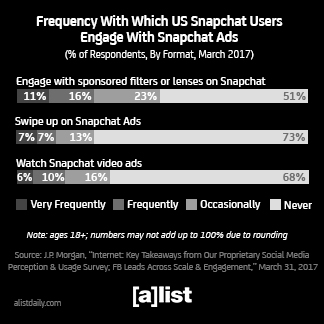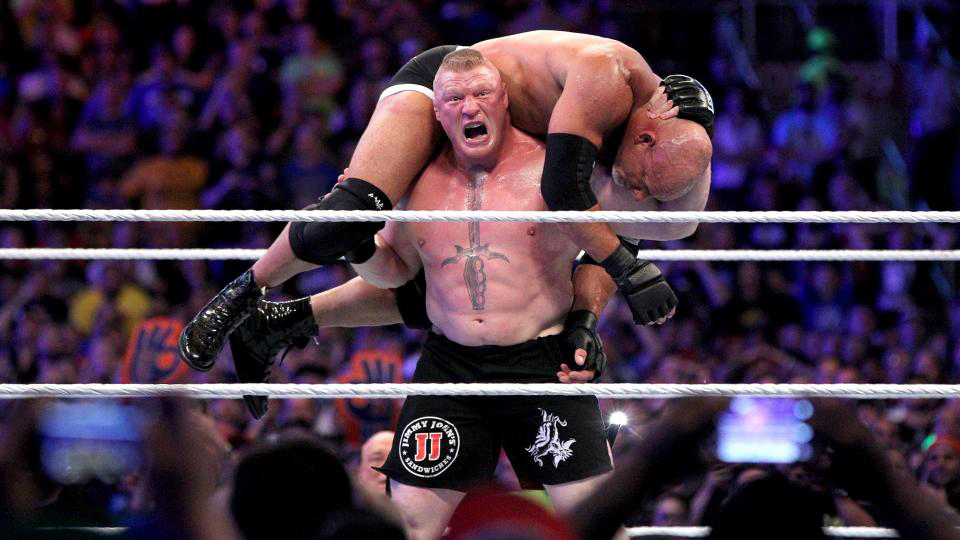This week, we examine the state of ads on Snapchat, the brands teenagers think are cool and why advertisers are losing so much money.
VR’s Got Company
Among virtual reality and 360-degree video markets, over 60 percent of companies involved specialize in applications, software, content distribution and core technology, according to ABI Research. The company found that there are already more than 460 companies operating in the space worldwide, with this number expected to climb. Thanks to a wide variety of uses for the medium, appeal for both the consumer and enterprise sectors will see the global market exceed $60 billion by 2021, ABI predicts. Among the VR and 360-video companies targeting specific markets, the media and entertainment category represents 35 percent.
Waste Not, Want Not
Are low-quality ads costing you money? Forrester says “yes”—to the tune of $7.4 billion last year. A new report by Forrester says that programmatic media and video are the primary causes of ad fraud spending “wastage.” If the problem is not addressed, that number may grow to $10.9 billion by 2021, the company warns. The report describes a digital advertising supply chain “riddled with problems, most directly connected to the lack of transparency in ad tech. The result is wasted time, effort, and money and lackluster ROI.”
Let’s Chat
Consumers are perfectly happy to interact with brands on their smartphones, according to a report by Vibes. The survey of 2,000 Americans found that 60 percent are comfortable engaging with chatbots, although just 22 percent have done so before. Daily notifications are fine, according to 56 percent. Consumers share they’re most likely to subscribe to alerts from retailers, restaurants and brands (50 percent), followed by weather and radio stations (37 percent) and credit card companies and other financial institutions (34 percent).
 “Ad” Me On Social
“Ad” Me On Social
Snapchat is a popular hangout for young consumers, and therefore a natural draw for advertisers. Unfortunately for ads not native to the app, Snappers just aren’t as interested. According to a study by J.P. Morgan, 50 percent of participants report interacting with sponsored geofilters and lenses, which are unique the platform. The other half, however, said they never engage in those offerings at all. Seventy-three percent indicated that they never engage with “swipe up ads,” while video ads fared slightly better with 68 percent never engaging.
These Brands Are “Lit”
Generations tend to have different opinions, to put it lightly, and that goes for brands, too. These differences are illustrated by a Google study called, It’s Lit: A Guide To What Teens Think Is Cool. Comparing Gen Z to millennials, the study found that both generations think Coke is “cooler” than Pepsi and while both think Google is cool, they have different views of the company. Gen Z associates the company with “fun” and “functional,” while millennials see it as “serious” and “functional.”
The Top 10 Brands Beloved By Gen Z Are:
- YouTube
- Netflix
- Xbox
- Oreo
- GoPro
- PlayStation
- Doritos
- Nike
- Chrome
Wrestling Up Subscribers
Fans just bashed a folding chair over the WWE Network’s record for total subscribers following WrestleMania 33 on Sunday. Total domestic subscribers increased four percent to 1.45 million, WWE reported, with total international subscribers jumping 15 percent to 497,000 as of April 4, 2016—the day after WrestleMania last year. Paid subscribers reached 1.66 million, an increase of 14 percent, including 1.24 million domestic (up 12 percent) and 424,000 international (23 percent) subscribers as of Monday. WrestleMania also broke the attendance record for the Orlando Citrus Bowl with 75,245 fans from all 50 states. It was also made available in China for the first time (on a pay-per-view basis via PPTV’s digital platform).
So, how do many internet users actually trust ads? Check out our last marketing stats rundown.

